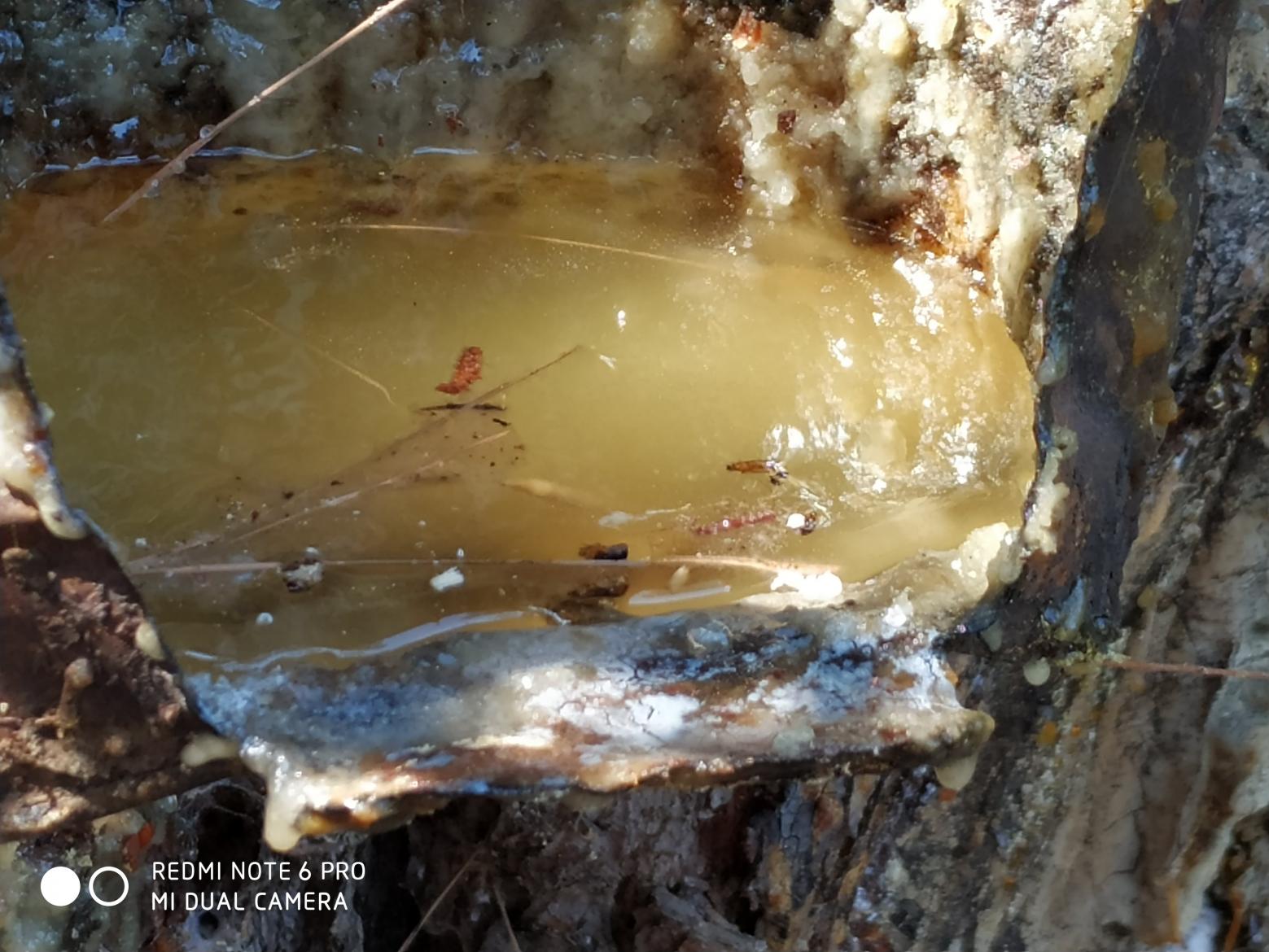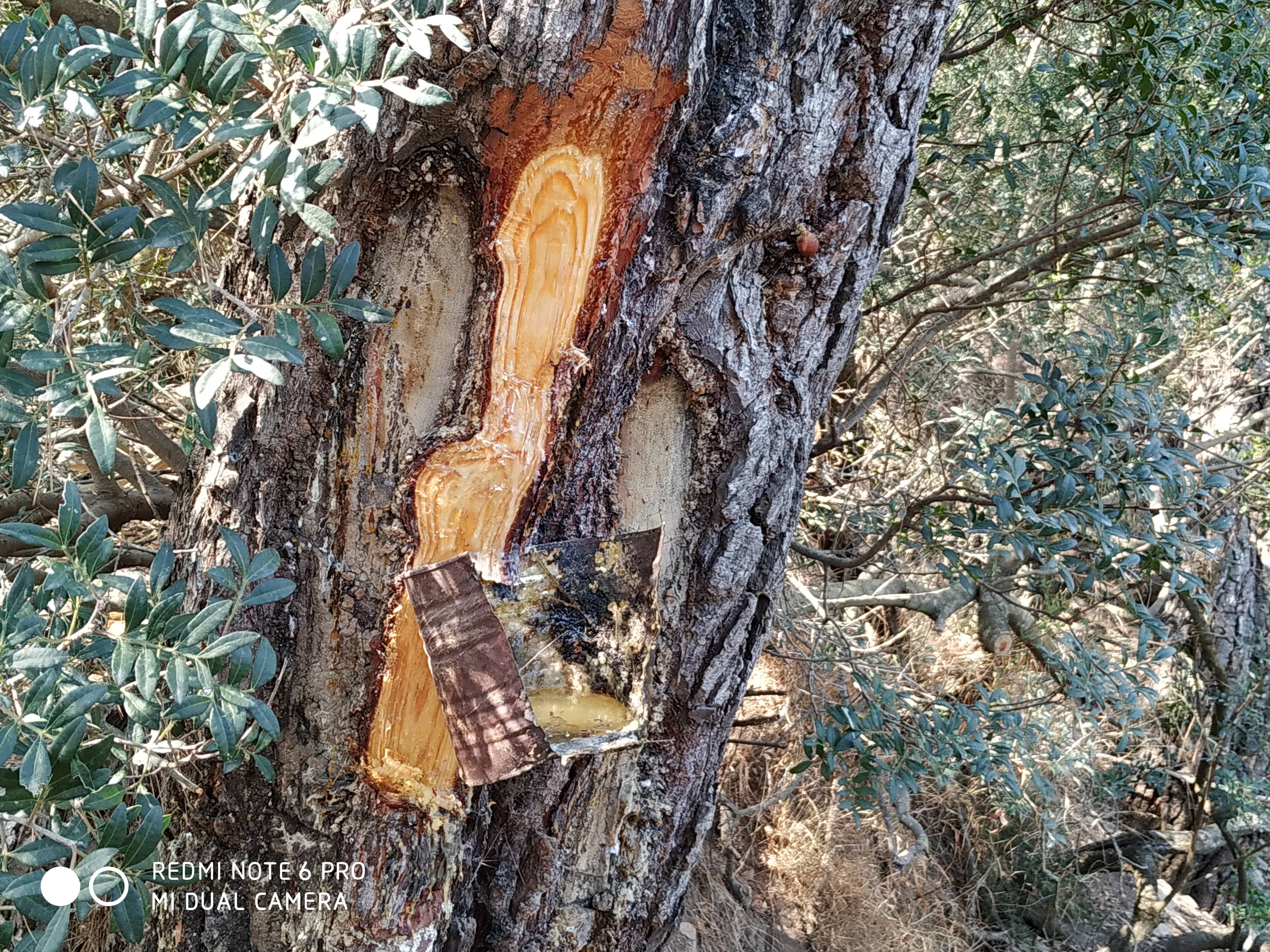Let's Talk About Resin
By Olga Antoniadou
If you'd met me a few years ago and insisted on us drinking a bottle of Retsina, I think I might well have tipped the table in my effort to run away from the experience. It was beyond me why people drank that stuff, save the fact that it was cheap, affordable and could be found absolutely anywhere. But, to me, it was more of a tourist attraction or low budget student drink than a wine. Usually of unknown origin served in little copper cans, of a ¼, ½ or 1 Lt. And, I'm not sure if the resin made it a heady wine or, as students, we just had too much of it. Probably both.
Time aids evolution. Winemakers changed, methods improved, experimentation with traditional forms ensued and nowadays 'new age' Retsina (Yiannis prefers calling them Ritinitis wines) is conquering the world. The secret nowadays is that the wine to which the resin is added is of good or very good quality. The character of Assyrtiko, Savatiano and Roditis shines through, with the resin augmenting rather than restricting aromatic complexity.
I was told that some of the best pine resin is sourced in Attica, and according to wine producers, it adds a 'piney, botanic, mastic-like note'. I decided I wanted to know more about how pine resin is produced, so I pestered the pine resin producer for a few weeks before I managed an appointment and ventured to Keratea amidst Covid and the wildfires of Attica.
Charis was late, and I thought to myself that he probably changed his mind after the hesitancy he had shown actually to arrange a meeting. However, when he did arrive, I was pleasantly surprised because before me stood a man much younger than my estimation of the voice on the phone, in his forties, slim, grey-haired, wearing a cross on his chest, friendly, polite, apologetic for standing me up.
From the way he talks, I surmise he is deeply religious. Later on, he tells me that he is a high-school Theology professor and resin production is a side income, albeit a profession that has run in the family for generations. His grandfathers and great-grandfathers were both resin producers and winemakers. He, in turn, plans to pass the art on to his children.
The area in which he farms the resin sustained about 500 resin producers, at some point, of which only Charis is left. "There was a resin producer cooperative, and the contract was drawn in 1830. All families in the area produced resin. The cooperative was abolished by law in 2014".
Kouvaras is the area he harvests the resin, which boasts a 600 ha privately owned pine forest (it belongs to the Municipality). Apparently, this area had ownership titles before the Ottoman rule of Greece, and that is why ownership wasn't passed on to the Greek government after liberation.
I am told that harvesting resin is tough to work, and that is why, in the past, it was included on the list of health-hazardous occupations. But, on the other hand, one is in clean air, in the forest, and human presence, in this case, is protective from fires as the forest needs to be kept clean. "You know, when the pine tree isn't cultivated, it's a nuclear bomb. Pine trees are extremely flammable".
The resin is harvested when the weather is warmer, from about late April to mid-October. An incision of about 10 cm is made, and the bark is lifted away. Then the wood is carved out about 2 cm. The sap that emerges is white, thick and gluey. This is collected in large containers and is cleaned of pine needles, pine cones or other debris while it is still in liquid form. Twenty-four hours later, it solidifies. It can be kept in entirely full plastic containers (no O2 contact) for about a year. "Actually, the top of the container forms a crust that seals and protects what is underneath. That is why barrels of wine were sealed with resin in the past. The coat of terebinth oil that forms above the wine preserves it from oxidation".
About 70-80 kgs of resin are harvested from about 60-70 pine trees in the space of 20 days. Each pine tree is cultivated four times within the same year. First, one patch is made, then later a second, a third, a fourth around the tree's circumference. It takes about 4-5 years for the wounds to heal. This means that different trees are used each year to heal the bark on the cultivated trees.
Charis considers the terroir of Kouvaras special, and the makeup of the soil, which is rich in minerals but contains no iron, is what makes the resin of the area sought after by winemakers. "Resin also has industrial uses, e.g. in dentistry, but the quantities I make are enough only for winemakers".
What an interesting conversation. I had never really thought about how the resin is produced. I thanked Charis and ran off to work.
Winemakers nowadays use tiny quantities of resin and add the resin during fermentation, so the aromas are better integrated. Retsina is a traditional appellation wine that is very particular and different to anything else one has tried. A wine that can match any type of intense, pungent food that most wines could not stand up to. A wine that can glorify fried fish (fried anything for that matter). A wine that is genuinely part of Greek tradition and works beautifully with most 'meze'.
I think I am becoming quite a fan of Retsina, after all.





